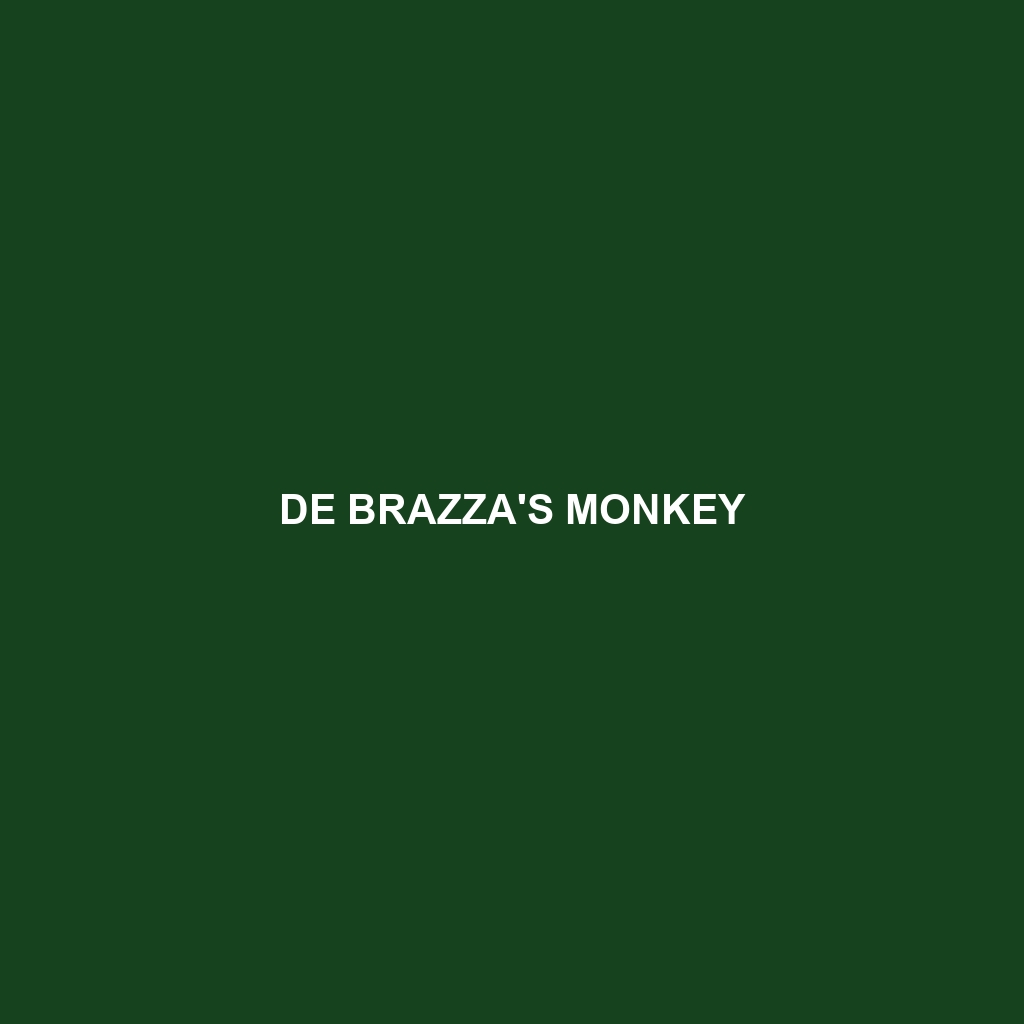De Brazza’s Monkey: A Detailed Guide
De Brazza’s Monkey (Cercopithecus neglectus), also known as the swamp monkey, is an Old World primate native to the dense forests and wetlands of Central Africa. Known for its distinctive appearance and elusive nature, this species is a fascinating subject of study for both wildlife enthusiasts and researchers alike.
Physical Characteristics
Size: Adult De Brazza’s Monkeys typically weigh between 4 to 7 kilograms (9 to 15 pounds) and measure about 40 to 60 centimeters (16 to 24 inches) in body length, with a tail that can add an additional 50 to 75 centimeters (20 to 30 inches).
Coloration: These monkeys boast a striking coat of fur. Their bodies are predominantly dark grey with an orange crescent-shaped marking on their foreheads. They have a white beard and muzzle, giving them a wise and dignified appearance. Their hind legs and tail are often darker, contrasting with the lighter shades on their face and chest.
Special Features: One of the most distinguishing features of De Brazza’s Monkey is their white beard, which males use in social interactions and as a visual cue to identify one another. They also have cheek pouches that allow them to store food while foraging, which is particularly useful for avoiding predators.
Behaviors
Social Interactions: De Brazza’s Monkeys are generally social creatures, living in small family groups typically consisting of a dominant male, several females, and their offspring. Communication within the group involves a range of vocalizations, facial expressions, and body postures. They are known to be shy and elusive, often remaining hidden in dense foliage to avoid detection.
Feeding Habits: These monkeys are omnivorous, with a diet that includes fruits, seeds, leaves, flowers, insects, and small animals. They are particularly fond of fruits and will travel significant distances to find them, exhibiting a high level of adaptability in their foraging techniques.
Ecological Roles: De Brazza’s Monkeys play a vital role in their ecosystems as seed dispersers. By consuming fruits and excreting the seeds in different locations, they contribute to the regeneration of their forest habitats.
Habitats
De Brazza’s Monkeys are typically found in dense, swampy forests and wetlands, often near rivers and streams. They are highly adaptive and can also inhabit montane and bamboo forests. Their preference for such habitats provides them with ample cover from predators and a rich supply of food resources.
Adaptations
These monkeys exhibit several adaptations that aid their survival:
Arboreal Lifestyle: Their strong limbs and prehensile tails enable them to navigate the forest canopy with ease.
Cryptic Coloration: Their fur blends well with the forest environment, providing camouflage from predators.
Cheek Pouches: These allow them to store food and eat it in a safer location, reducing the time spent exposed to potential threats.
Conservation Status
According to the International Union for Conservation of Nature (IUCN), De Brazza’s Monkey is currently classified as “Least Concern.” However, their populations are threatened by habitat destruction, hunting, and the pet trade. Conservation efforts are essential to ensure their continued survival, including habitat protection and anti-poaching measures.
Fun Facts
De Brazza’s Monkeys are named after the Italian-French explorer Pierre Savorgnan de Brazza.
They are one of the most widely distributed African forest monkeys, ranging from Cameroon to Ethiopia and down to Angola.
Despite their small size, they are known to be quite territorial and will defend their home range vigorously from intruders.
By understanding and appreciating the complex lives of De Brazza’s Monkeys, we can better contribute to their conservation and the protection of their natural habitats. Whether you’re a researcher, a wildlife enthusiast, or simply curious about these fascinating primates, De Brazza’s Monkeys offer a captivating glimpse into the rich biodiversity of Central Africa.
